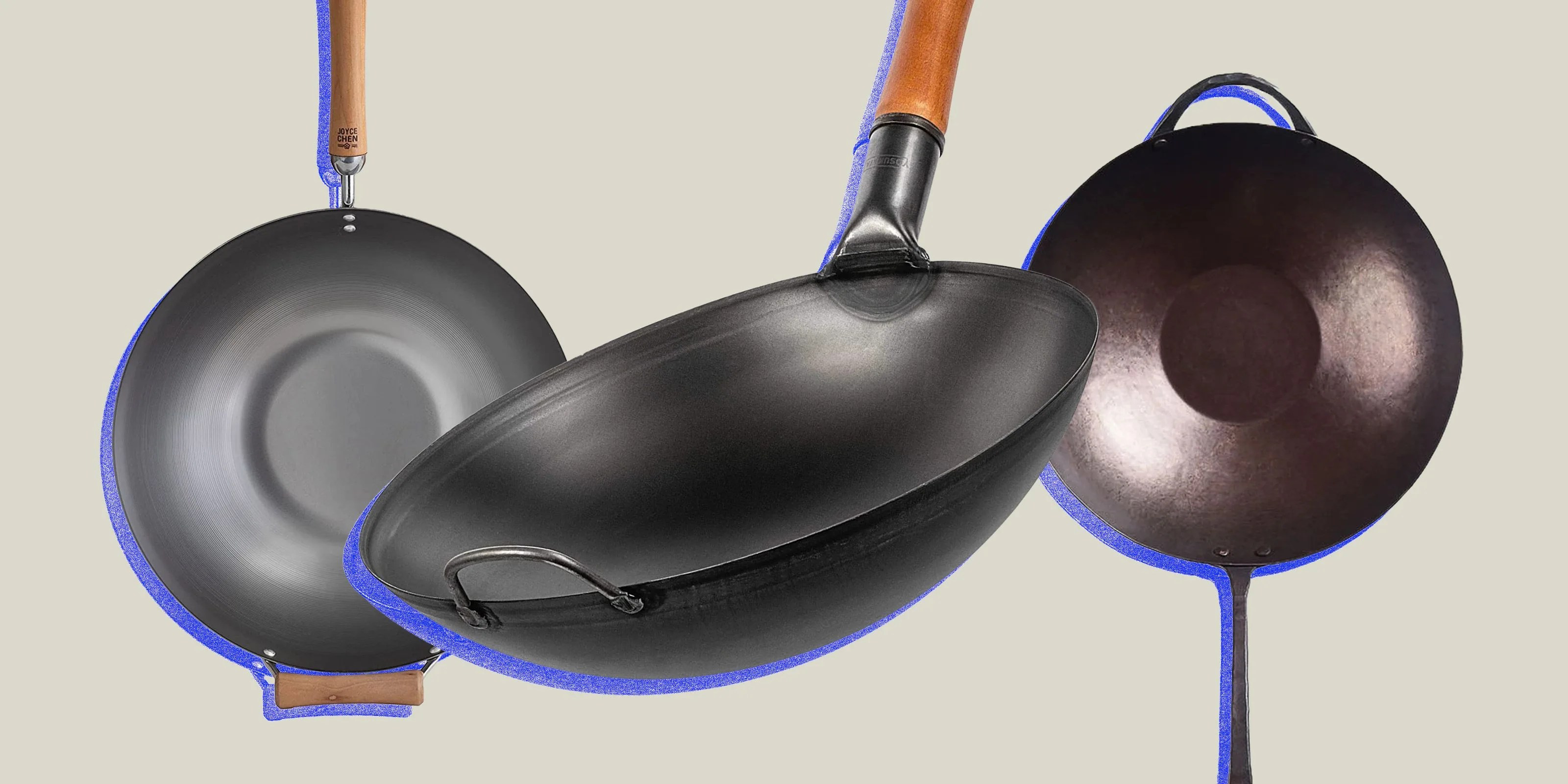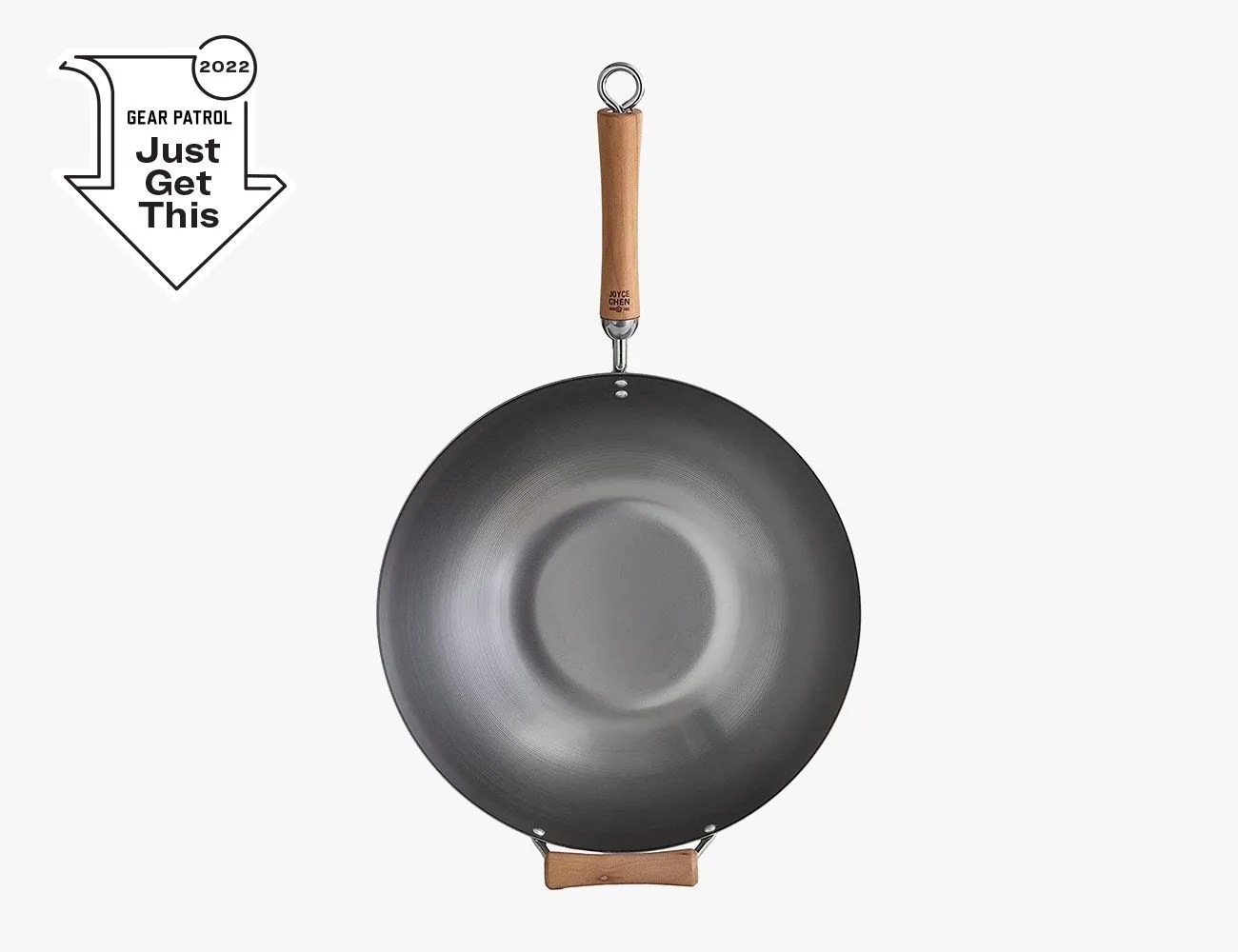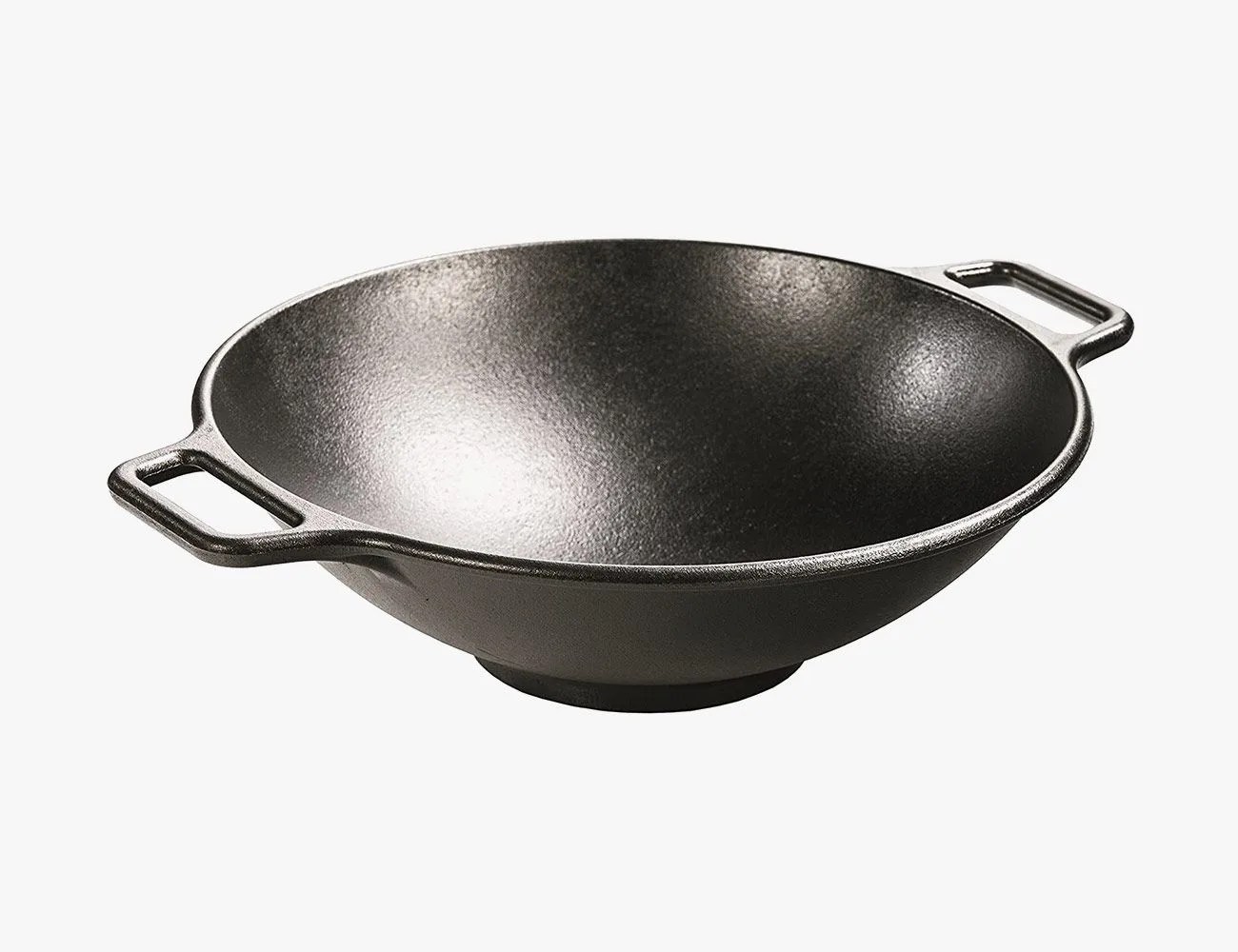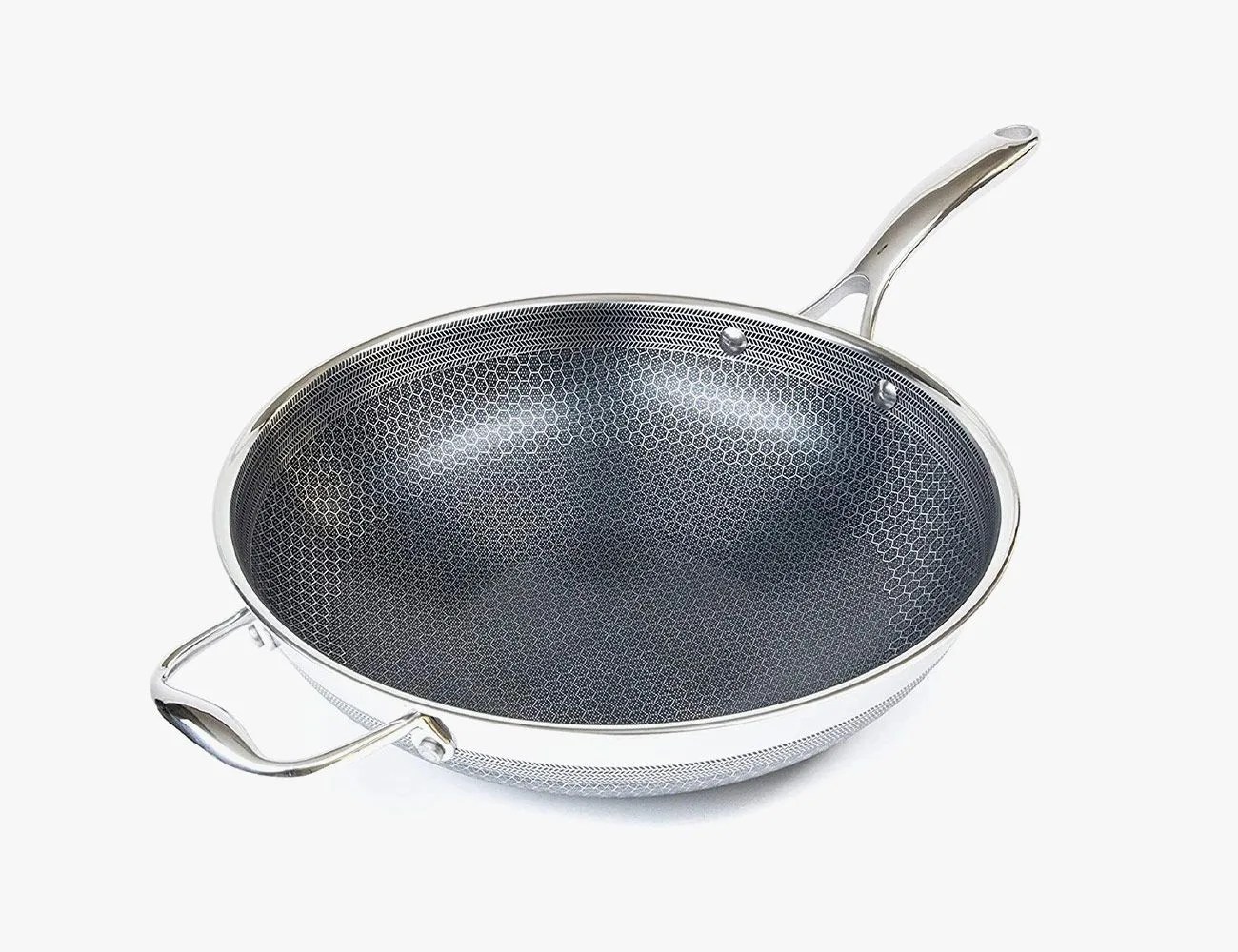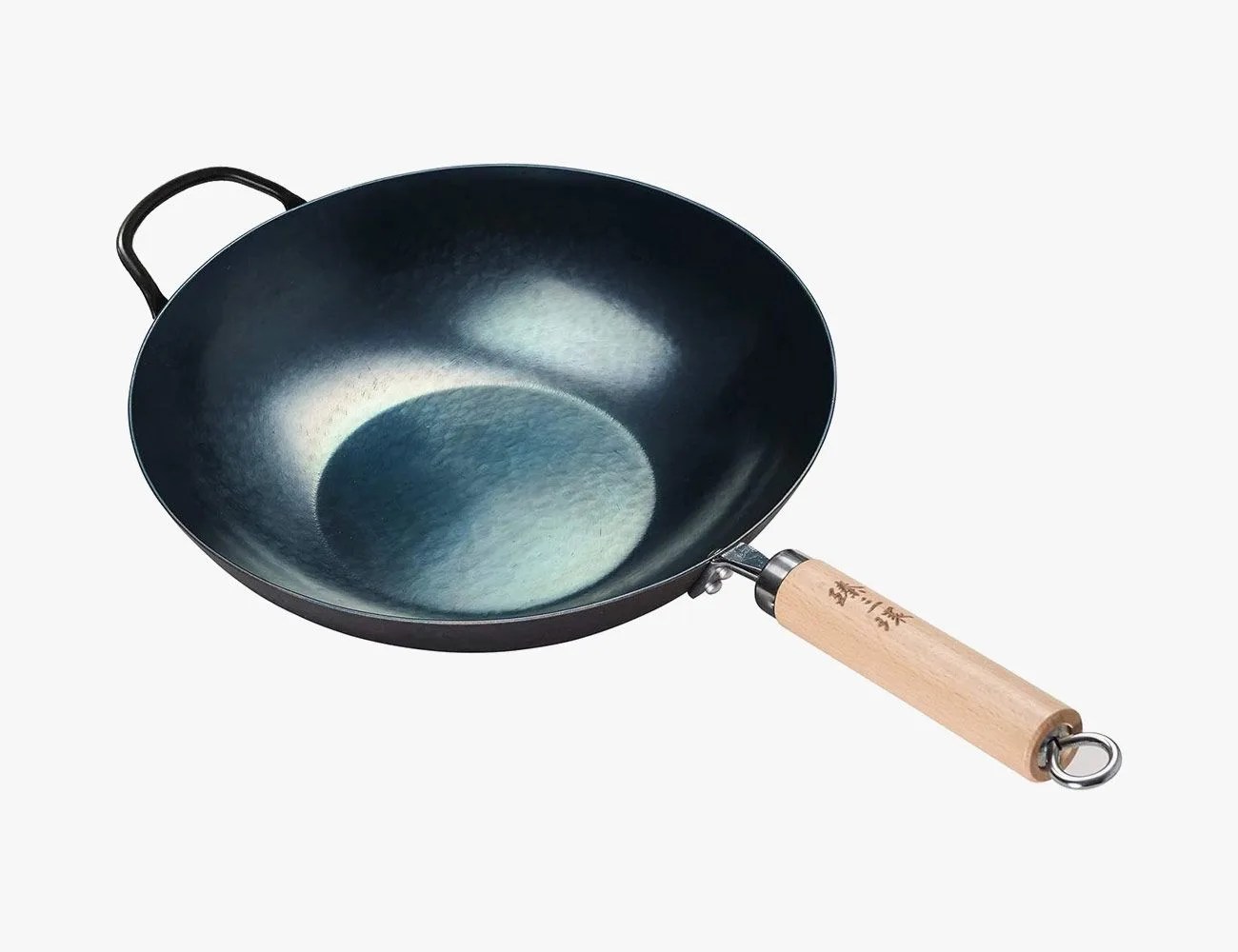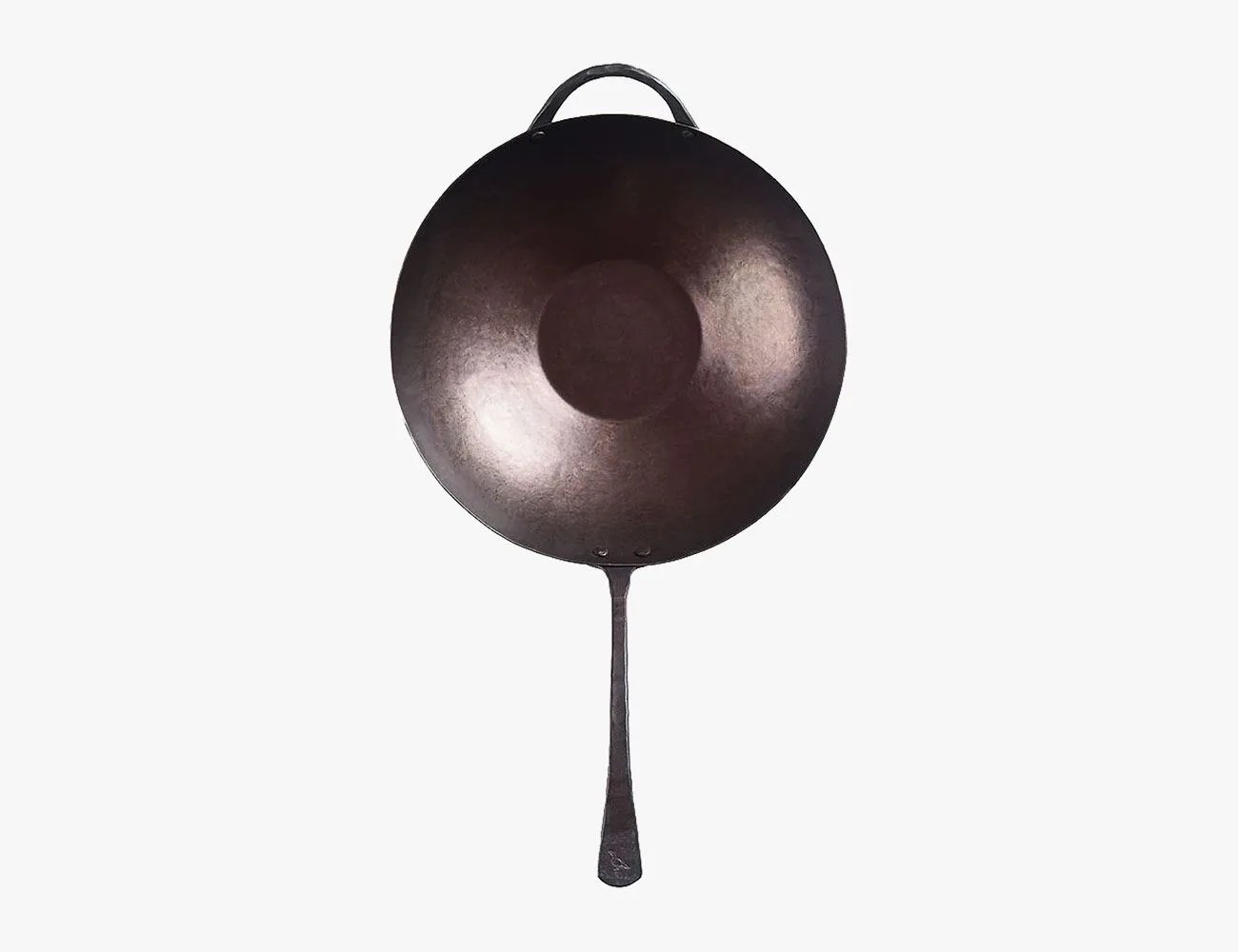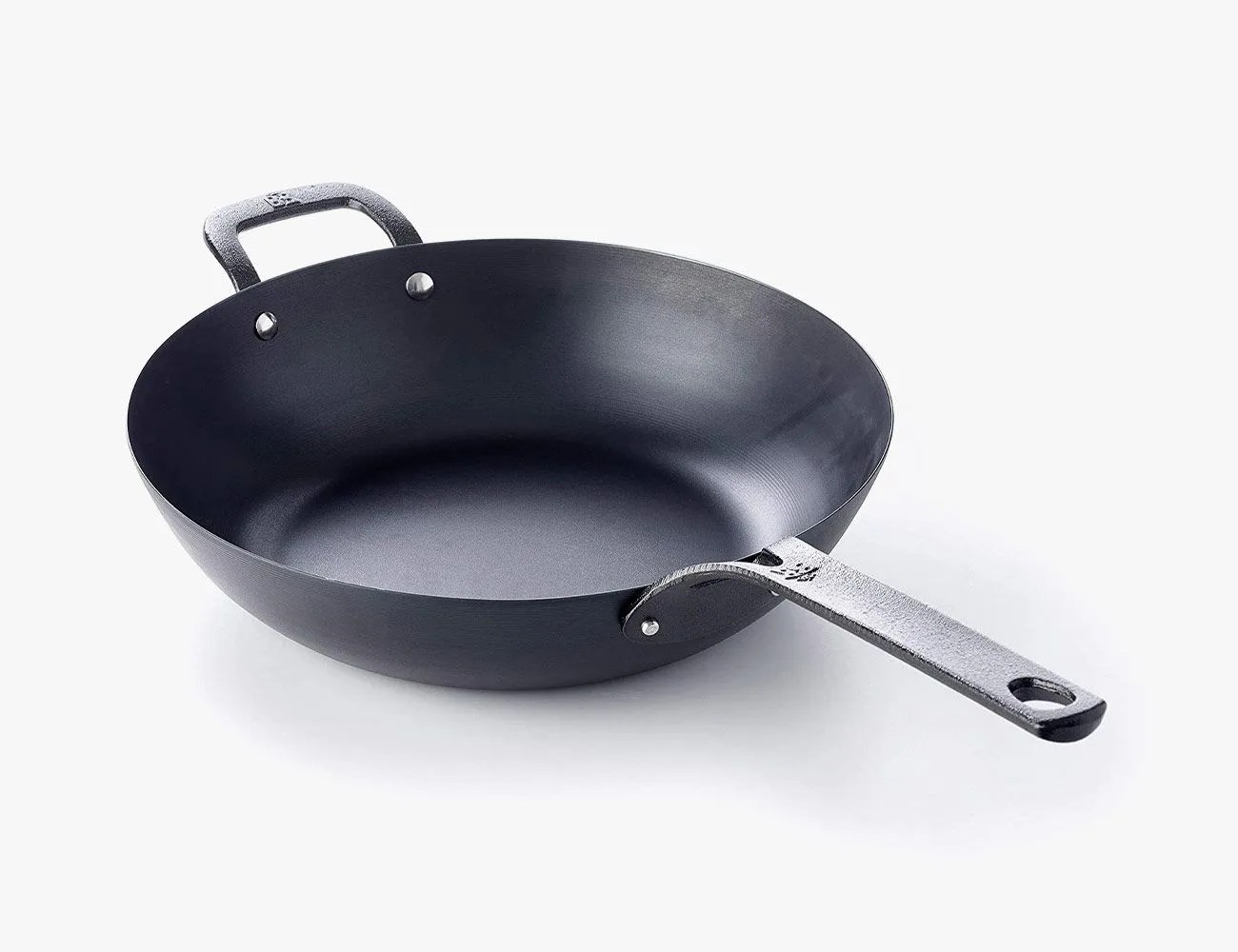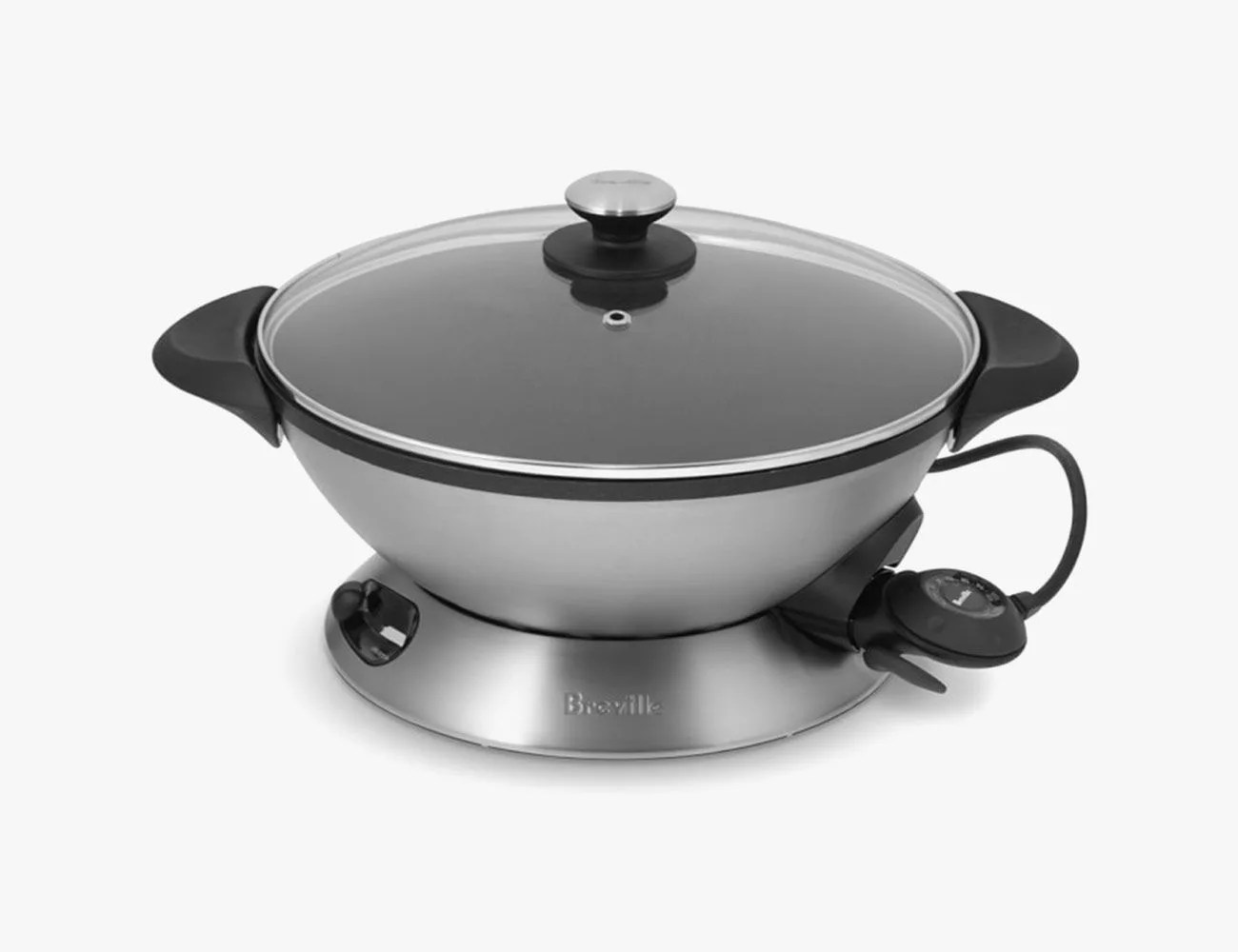For how incredible a wok is, it’s not very high on people’s list when stocking their pots and pans. Especially in the west, the pure bliss of cooking – not set-it-and-forget-it cooking, but active, sweaty, hands-darting-around wok cooking – is not as widely known as it should be.
Sizzle. Toss. Using a wok is dancing with heat and to be light on your feet you need lightweight pans made of thin carbon steel. Add to this the unique shape of the pan (purists will insist on round bottoms) which maximizes searing surface area, and a wok will stir fry better than anything else in the kitchen. And once you master the basics, you’ll begin tossing with enough elbow to ignite the cooking oils, elevating you to the smoky nirvana of wok hei.
Whether you’re cooking fried rice or steamed veggies or popcorn, these are the best woks for pursuing wok hei paradise. But be warned: Like anything worth having, woks require some love and light maintenance after each use. They’ll also typically need to be seasoned before their first use. We asked chef and food writer (and wok lover) J. Kenji López-Alt for his tips on choosing the right wok — plus, the woks we recommend for most people.
- Best Overall Wok: Joyce Chen Carbon Steel Wok
- Best Carbon Steel Wok: Yosukata Carbon Steel Wok Pan
- Best Cast-Iron Wok: Lodge Pro-Logic Cast-Iron Wok
- Best Nonstick Wok: HexClad Hybrid Stainless Wok
- Best Wrought-Iron Wok: ZhenSanHuan Hand-Hammered Wok
- Best Looking Wok: Smithey Ironware Wok
- Best for Induction Cooktops: BK Black Carbon Steel Wok
- Best Electric Wok: Breville Hot Wok Pro
What Is a Wok?
Put simply, a wok is a light, easily-maneuverable pan made from a highly reactive metal. Put more simply, a wok cooks fast by searing food hard and allowing you to toss it through steamy air easily. Why is this important? Because nothing will hit your table faster for dinner than a stir-fry made in a wok. Leftover protein? A few veggies? Some dry noodles. You can make delicious stir-fry within 30 minutes, easy. When you’re shopping for a wok, Kenji recommends you loook for one that’s around 14 inches in diameter — it’s large enough to cook for a family of four, but remains nimble enough to keep food in motion. And when it comes to the handle, the longer, the better. What’s even better, Kenji says, is when there’s a helper handle, or a small handle on the opposite side of the main handle.
What Is Wok Hei?
Literally translated to “wok energy,” the term wok hei is generally used to describe the unique flavor that hot and fast wok cooking imparts on food. One of the most famous books on wok cooking, The Wisdom of the Chinese Kitchen by Grace Young, defines it as “when a wok breathes energy into a stir-fry, giving foods and unique concentration and aroma.” Typically this is achieved by tossing in such a way as to allow the oils of the dish to briefly ignite as they fly through the air. The burnt oil then imparts a smokiness you can’t achieve with more western-style cooking. For those without high-powered stoves, this feat is achieved easily with a handheld blow torch.
What Are the Different Wok Materials?
Carbon steel
Carbon steel is the best choice for 99 percent of aspiring wok cooks. The metal’s high volumetric heat capacity means it can sear with the best of them while remaining thin enough to stir and toss with ease. No other metal even comes close. Carbon steel’s high volumetric heat capacity means it can sear with the best of them while remaining thin enough to stir and toss with ease. As a bonus, Kenji says, “it’s virtually indestructible. I’ve had the same wok for over 20 years and I cook in it all the time.”
Nonstick
Unfortunately, while we love the ease of non-stick for many types of cooking, non-stick is generally not ideal for a wok. The high temp of wok cooking (if you aren’t blasting high heat you’re not doing it right!) will cause the nonstick coating to break down and release toxic vapors. Plus, the paltry searing ability of nonstick is such that you’ll mostly be steaming your stir-fry rather than creating a crust, which is definitely not what you’re going for.
Cast Iron
Alongside carbon steel, cast iron is a traditional wok material. For those that want to stir, rather than toss, their stir-fry, cast iron is a viable option. While it’s very heavy and not very maneuverable, it has the benefit of being able to store a lot of heat, which can help achieve searing temps for those of us with low-powered home ranges. Note: These types of woks will typically be Cantonese-style in that they have two looped metal handles on either side instead of one long handle.
What’s the Difference Between Flat-Bottomed and Round-Bottomed Woks?
As you might expect, a round-bottomed wok features a bowl-shaped bottom while the flat-bottomed variety features a flat area of around four to five inches in diameter at the bottom.
For electric, induction and gas ranges, Kenji likes to keep his wok bottoms flat. Sure, round bottoms are traditional, but they require a gas range with a wok ring for stability, which “ends up elevating your wok too far above the flame to be effective. In the kitchen, heat dissipates at the inverse square law.”
For those with gas ranges, a round-bottomed wok will require a wok ring to stabilize the wok. I’ve found that this ring pushes your wok so far off the flames it becomes difficult to achieve the level of heat needed to really get things sizzling. The slight benefit you find in the smoothness of tossing in a round wok isn’t a worthwhile trade-off for a stable, flat-bottomed wok that works on all types of ranges. As someone who uses their wok for deep frying (and you should too!), stability isn’t something I’ll compromise on.
